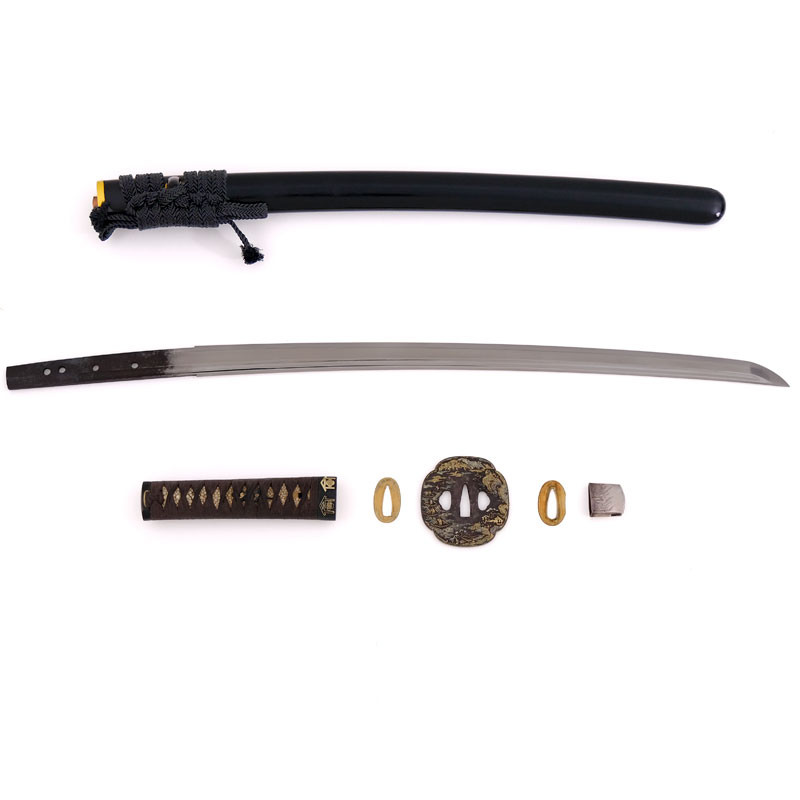


















More informations about this product
| Total Weight | 0.911 kg | |
| Weight without Saya | 0.749 kg | |
| Blade Weight | 0.450 kg | |
| Full Blade length (Toshin) | 67.20 cm | |
| Nagasa | 51.20 cm | |
| Nakago Length | 16.0 cm | |
| Sori (curvature) | 1.02 cm | |
| Kissaki Length | 3.53 cm | |
| Moto Haba | 2.75 cm | |
| Saki Haba | 2.00 cm | |
| Moto Kasane | A = 0.62 cm B = 0.62 cm |
|
| Saki Kasane | A = 0.45 cm B = 0.50 cm |
|
| Curvature | Tori Zori (half blade) | |
| Type Kissaki | Chu Kissaki elongated | |
| Blade Structure | Shinogi Zukuri (diamond shaped) | |
| Mune | Iori Mune (triangular) | |
| Hamon | Chu Suguha (straight line) | |
| Hada | Ko Itame with Midare with Utsuri and Jifu | |
| Boshi | Ko Maru Kaeri | |
| Nakago | O Suri Age (shortened), Mumei (unsigned), 4 Mekugi Ana, Kiri Yasurime, Kiri Kurijiri, shape Futsu gata. | |
| Bohi | Bo-hi traversing on each face, Kaki Nagashi (partial extension on the Nakago), Hisaki Agaru (extension beyond the Yokote) | |
| Saya | Weight of 238g, length 54.4 cm, black glossy lacquer Kuroro slightly granulated, black Sageo in silk chevron, gilded Shitodome, presence of Kogatana with Kozuka with the flight pattern of geese on a Nanako background. | |
| Tsuka & Tosogu (Tsuba, Menuki, Fuchi Kashira) |
- Tsuka: Weight of 95 g for a length of 16.50 cm, braiding in Tsumami Maki, complete Same high quality white, Kashira in horn. - Menuki : design of vine leaves and Chrysanthemum flowers. - Tsuba : Weight of 166g, width 7.49 x h 7.81x ep 0.52 cm, quadrilobate shape Mokko gata, Kogai and Kozuka Ana, embossed and golden patterns of mountains, boats, trees. - Fuchi: Fuchi to the family motive (Kamon) of the clan Ito 伊東 Mon Iori ni Mokko. The Ito 伊東 family is a powerful clan from Izu province, descendants of the southern Fujiwara. - Habaki: Weight of 25g copper, covered with a silver sheet, with the pattern of oblique Nekogaki Yujo. - Seppa: 2 Seppa (7g) in copper covered with a golden leaf. |
|
| Study & Team Review |
The Enju 延 寿 school was created by blacksmith Hiromura 弘村 at the end of the Kamakura period (around 1320). |
|
Share your opinion
error Your review appreciation cannot be sent
feedback Report comment
check_circle Report sent
error Your report cannot be sent